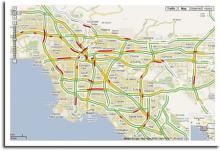Five months ago, I had to pay $4.55 per gallon for regular unleaded at the local Valero gasoline station. At the time, gasoline prices were just 10% away from hitting the $5.00 per gallon mark. So, if I was offered a bet on whether gasoline prices would be over $5.00 or under $2.50 in five months, guess which way I would have wagered? However, here we are in the middle of November and regular unleaded is $2.35 per gallon. So, what does this all mean?
Right now, I am not sure. Was it oil speculators that previously drove up the price of gasoline? Or, is the economy that badly off to dry up demand for gasoline? In some parts of the Bay Area, the signs of the real estate deflation are obvious. However, in other cities, housing prices remain pricey. I always thought demand for gasoline was relatively inelastic. Everyone has to drive, right? However, if the demand for gasoline is true off kilter, then we are all headed for trouble times, regardless of which neighborhood we live in.

